Inspiration
Top 5 Vegetarian Restaurant in Camp
1. Ram Krishna
Ram Krishna located near to Iskon Temple is a pure iconic camp vegetarian restaurant. They offer North Indian, South Indian, and fast food dishes. Everything you order here will be brilliant, every single dish. The service is one of the best in the industry and the staff is very courteous. The ambiance is like the Colonial style with the right blend of Indian tradition.

2. Coffee House Camp Pune
Coffee House on East Street has been one of Pune’s iconic places that have been around forever. The coffee house serves North Indian, South Indian, and fast food dishes. The coffee house is famous for its filtered coffee and lip-smacking Puree Bhaji. If you are in Camp, Pune, and fuel up your energy bar then the coffee house is the place to visit.
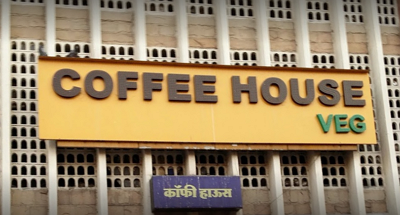
3. Supriya Restaurant
Supriya Restaurant is one of the best South Indian restaurants in Camp, Pune. The Dosa here really worth a try and ambiance if the good, the staff is very friendly and polite. An interesting dish to try for a foodie is Beetroot Cutlet.
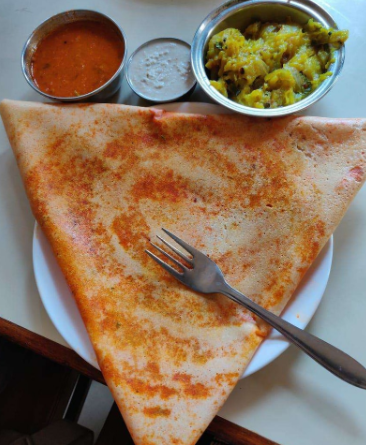
4. The leaf
As the restaurants suggest most of the dishes are served on a Banana leaf and offer a very traditional and authentic experience. Apart from serving basic and well-known dishes, they've also included snacks like Dakshin masala idli, Coorg idli, Mughlai idli etc.
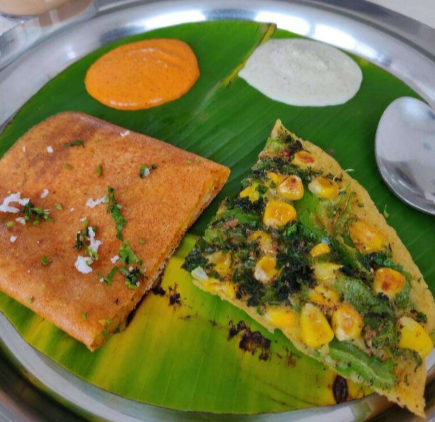
5. The Iskon temple offers on the best Kichadi in town and is distributed as Prasadam after the evening Aarti. Inside the temple, the visitors can take eat saatvik food which is delicious and makes you content.
Balaji Temple of Ketkawle, is a copy of the real Tirumala Venkateswara Temple and is located 60 km from Pune, Maharashtra. It is on Pune-Bangalore highway
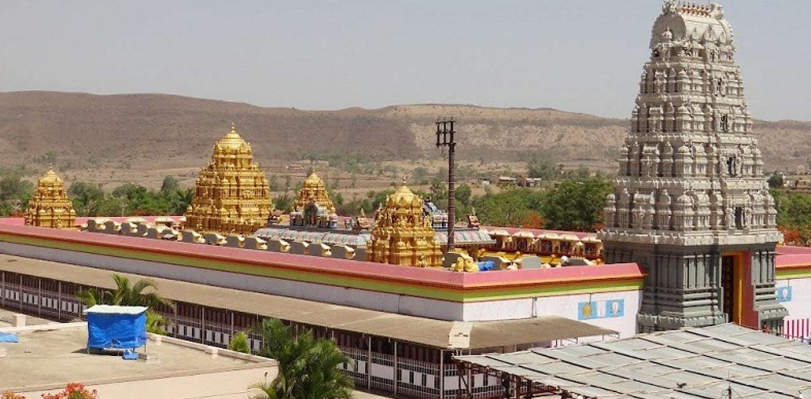
Jejuri Khandoba Temple :
This is a famous temple of Lord Khandoba. Khandoba per legend is a manifestation of Lord Shiva and this is his main shrine in India. It is a famous temple town being the family deity of many houses in Maharashtra and Karnataka. The temple s situated 48 km from Pune on Pune Pandharpur road at the hilltop. Lord Khandoba also is known as Martanda Bhairava or Malhari Martand
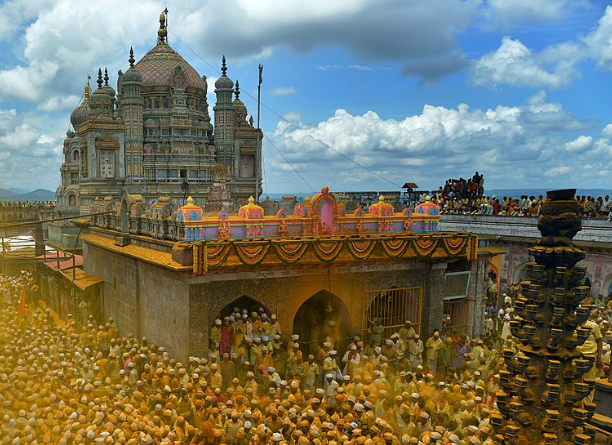
The Ekvira Aai Mandir is a Hindu temple located near the Karla Caves near Lonavala in Maharashtra, India. According to the legend, this temple was constructed by the Pandavas during their exile in the forest. The temple is located on a hill. One needs to ascend around 500 steps to reach the temple. It is surrounded by Karla caves, which are now protected by the Archeological Department. The temple is located 49 km from Pune (Maharashtra). 97 km from Mumbai (Maharashtra)
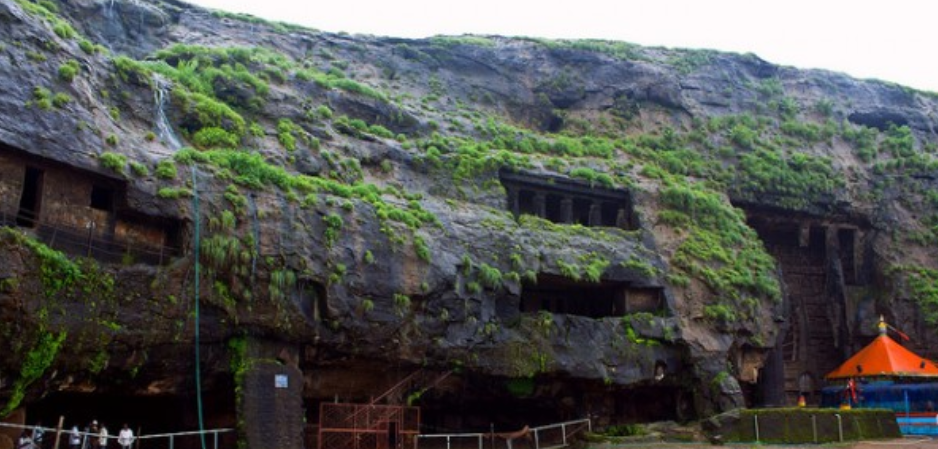
Lonavala & Khandala:
This scenic place is 65 km from the city of Pune and is a must go in monsoons, when you can drench yourselves in the waterfalls and gaze at the green flora around you. In summers as the lakes are dried up you could just trek on the hills or walk along the lake. Do not forget to taste the Chikkis and Corn which is sold by local in and around the touristy place.
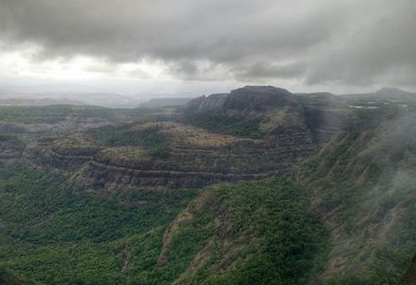
Lavasa:
Lavasa is a private, planned city being built near Pune. It is stylistically based on the Italian town Portofino, with a street and several buildings bearing the name of that town. The city is spread over 25,000 acres and is often called as India’s First hill station post Independence. The best time is to visit Monsoon and during the summer.
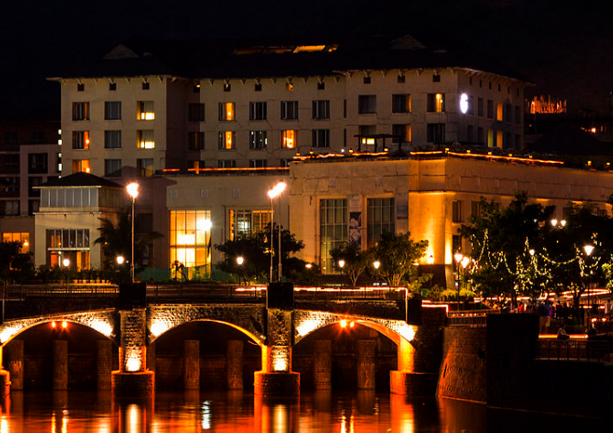
Matheran:
Matheran is a hill station in Karjat Tahsil in the Raigad district in the Indian state of Maharashtra. Matheran is part of the Mumbai Metropolitan Region. Matheran is one of the smallest hill stations in India. It is located on the Western Ghats range at an elevation of around 800 m (2,625 feet) above sea level. A hill-station which has mesmerizing weather throughout the year, the whole area is surrounded by greenery and waterfalls. A perfect place to visit with friends and family.

Alibaug, Kashid & Murud Janjira Fort:-
One of the most popular and alluring beaches of Maharashtra, the Kashid beach comes with a promise of a perfect and relaxed beach holiday. The sandy beach offers a dream destination for water enthusiasts. The beach is about 2 Km and gives the opportunity to taste the local cuisine.
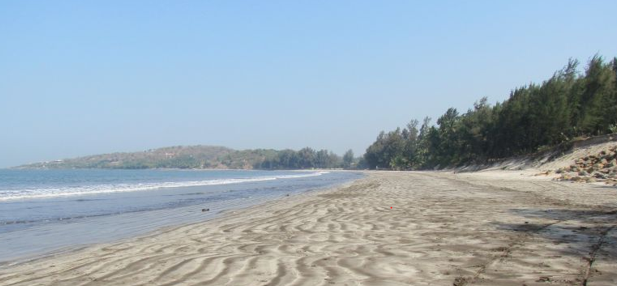
Murud Janjira Fort:
Dating back to 15th century AD, built under the rule of Emperor Malik Amber, the ruler of Ahmednagar. The word Janjira is not native to Indian language may have originated after the Arabic word Jazeera, which means an island. The scenic fort is situated on an oval-shaped rock off the Arabian sea. Janjira is considered one of the strongest marine forts in India

10 places in Shirdi that everyone must visit
Shirdi is nestled in the Rahatuka Taluka of the Ahemadnagar District in Maharashtra. It is one of the busiest religious destinations that caters to over 60,000 devotees lining up for darshan everyday. Shirdi is the home and the final resting place of Shree Satchidanand Sadguru Sainath Maharaj, affectionately known as ‘Sai baba’ or Shirdiwale Sai.
Sai baba is revered as a Guru, as a Mother, as one of the greatest saints of Bharatvarsha. Endowed with many powers, he is worshipped as God Incarnate (Sakshaat Ishwar).
In life, and in memorium, Sai baba continues to transform everyday. His greatest testimony is that people across faiths and religions throng to Shirdi and leave knowing greater contentment. His message to humanity was Shraddha-Saburi or Faith and Patience and ‘Sabka Malik Ek’ (God is One).
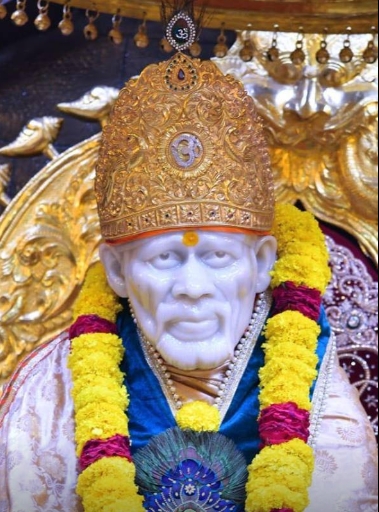
1. Samadhi Mandir
Among the most sacred places to visit in Shirdi, the Shri Sai Samadhi Mandir is the final resting place or Samadhi of Sai baba. By far, the biggest attraction, the Samadhi itself and the railings around it are built in white marble stones. Two silver pillars adorn the front of the Samadhi stone. Behind the Samadhi, the exquisite life-sized statue of Baba in his sitting pose was commissioned and built by the Late Balaji Vasant. As he is Shri Satchidanand Sadguru Sainath Maharaj, an unfurled silver parasol always provides him with cover. It is said that when the owner wanted to install an idol of Muralidhar (Shree Kirishna) on the land where the temple currently stands, Sai baba himself appeared as Muralidhar. Which is why his Samadhi is laid in this land.
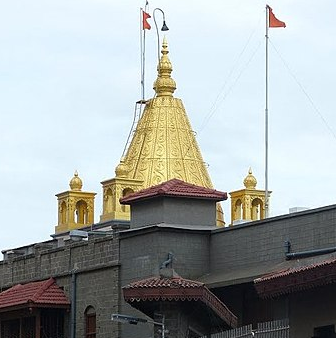
2. Gurusthan
In his well-known book, the Shree Sai Satcharita, Govind Raghunath Dabholkar, says, “Nobody knew the parents, birth or birthplace of the Sai baba. He was first seen under a Neem tree, seated in an asana.” Sai baba said the tomb of his Guru was located by the Neem tree and he always acknowledged that place. It is among the most holy and important places of Shirdi. Baba’s Paduka are also enshrined here.
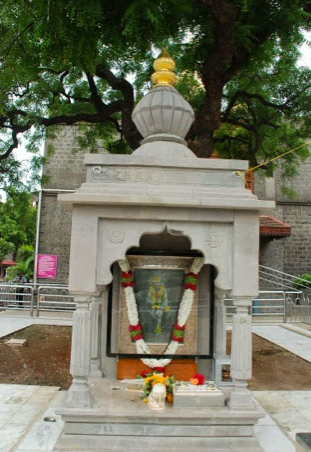
3.Dwarkamai
This Mystical and holy destination is probably the only Mosque that houses a Temple inside it. Sai baba did not discriminate between castes, status, or religions. Dwarkamayee is right at the entrance of the Sai Samadhi Mandir. This is where God solved problems, met with the people who came to him to get cured of their sickness, anxiety and worries. In Dwarkamyee, Sai’s Dhuni (the fire that produces the ‘Udi’ - the sacred ash) remains perpetually burning. Dwarkamayee also houses a beautiful portrait of Sai baba, which assumes life like qualities when one is in its presence. In the yard, one can feel his presence on the very stone that he used to sit on.
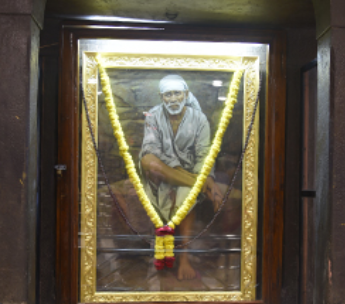
4.Khandoba Mandir
Khandoba Temple holds special importance not only for its ancient origin but also for being associated with Sai Baba. It is located on the main road in Shirdi. Baba came to Shirdi for the frst time with the marriage procession of Chand Patil. When the marriage party halted at the entrance gate of Khandoba Temple, the man priest Mhalsapati welcomed Baba saying "Aao Sai" (come in Sai)
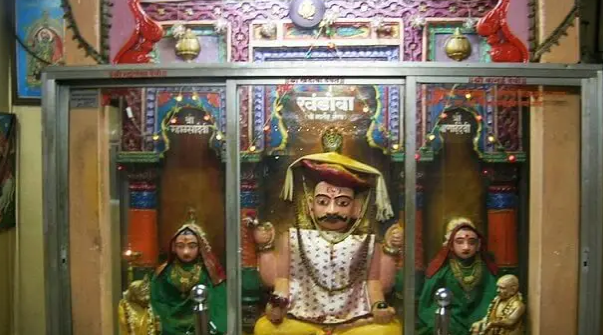
5. Lendi Baug
What used to be a vacant wasteland, Sai baba converted into a garden and named it after a rivulet called Lendi which used to run through. In this place of love, he meditated under the shade of the twin trees, Peepal and Neem. It is also where he maintained a permanent lamp (Nanda-deep), which was maintained by his attendant Abdul and remains perpetually lit.
The garden also has the tomb of Shyam Sundar, Sai baba’s horse whom baba loved so much that when the horse was being beaten, Baba cried out. The marks of the whip lashes appeared on Sai baba’s back. Shyam Sundar always bowed to Sai baba when he was alive. Outliving Baba, Shyam Sundar also bowed to Sai baba’s Samadhi when he died.

6. Chavdi
Sai baba spent his day alternately between Chavadi and Dwarkamayee. The inside of this building is partitioned into two areas: one where Baba used to sleep and the other for devotees to gather and worship.
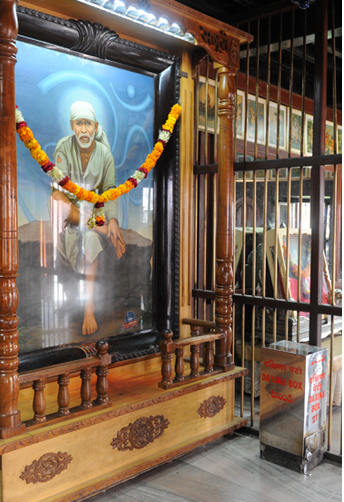
7. Upasani Maharaj Ashram
Upasani Maharaj Ashram was the abode of a saint by name Upasani Maharaj. He was an ardent disciple of Saibaba. The samadhi of Upasani Maharaj is located in this premise
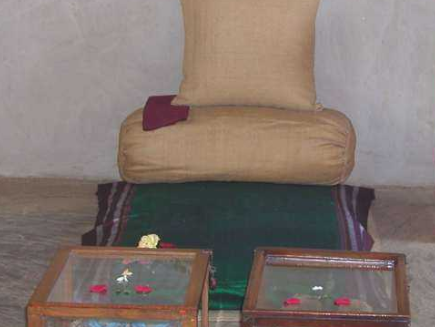
8. Datta Mandir
Situated in Lendi Bagh, there is a temple of Lord Dattatreya, the Perfect one, the Adi-Guru—the First Teacher. Shree Dattatreya is the incarnation of the divine trinity of Brahma, Vishnu, and Shiva and is considered one of the most ancient Gods in the Hindu pantheon. Sai baba is also revered as an incarnation of Shree Dattguru.
9. Khandoba Mandir
Khandoba is an avatar of Shiva and this temple is located on the outskirts of Shirdi. It was here that Sai baba was first welcomed into Shirdi, as the priest of this temple, Mhalsapati, greeted him with ‘Aao Sai’, and so he was.
10. Dixit Wada Museum
Home to many items used by Baba himself, this museum is a must visit for every one. One can see Baba’s Padukas, the Grinding Stone he used, the Chair he used to sit on, the two Utensils he used to feed the people who came to him, the Earthenware and the Water Pot which is filled to the brim even today, and the Chimta he used when singing.
11. The Palkhi
Every Thursday (Guruvaar), Sai’s Palkhi procession starts from the Samadhi Mandir. The procession follows the footsteps of Sai baba, going first to Dwarkamayee and then to the Chavadi, and then back to the Samadhi Mandir. In the Palkhi, are the portrait of Sai baba wrapped in a Royal Robe, his Sacred Staff and his Paduka kept on a silver platter. The Palkhi is covered by a big parasol.
12. The Mahadev temple and the Tiger’s Tomb
Some traveling Dervishes who had a caged Tiger as an exhibit heard of Sai baba as a hakim. They brought the Tiger to be healed as it was sick. Baba asked the animal to be brought to him. Freed from the cage and chains that bound its movement , this ferocious animal approached the steps of Dwarkamayee, thrashed its tail to the ground three times after staring at Sai baba, gave a terrific roar and fell down dead. Sai baba said, the animal had been in the their debt from a previous birth and was now cleared of it. He then gave them 150 rupees and asked them to bury the Tiger in front of the nearby Mahadev temple.
Experience a magical holy journey only at Sai Teerth, India’s first immersive theme park dedicated to the most worshipped secular saint of all times - Saibaba. Sai Teerth by Malpani Group is one of the modern wonders, which combines devotion with technology and entertainment. Four custom-built, world-class themed attractions amaze visitors with their grandeur, innovation, and attention to detail. Teerth Yatra – A spiritual journey across 10 devotional temples of India.
The show timings from starts from 11:00 to 5:15 and has four shows Teerth Yatra, Lanka Dahan, Sabka Malik Ek, and Dwarkamai.
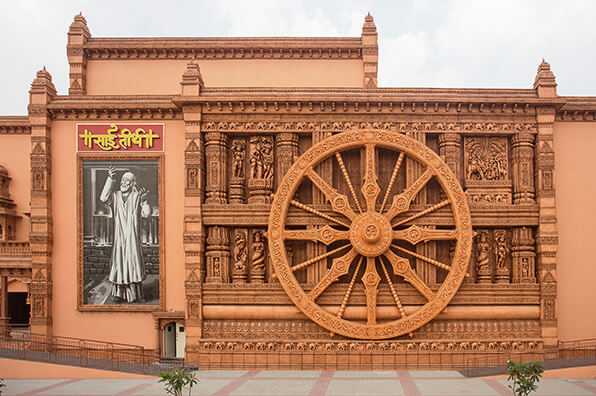
Visiting Sai baba in Shirdi is always a good idea no matter where you are and come from. To ensure your journey is smooth, plan it well in advance and use the convenient online portal maintained by Shree Sai Sansthan Trust for bookings.
5 Best places to Visit in Aurangabad
Hello All, I was raised in this beautiful city, I am not a writer, but my daughter says I am very good storyteller, I am instagrammer and a family man who loves to travel. Early 2000 , I Left India and moved to USA, but most of family still lives in Aurangabad and I try to visit this beautiful city every other year , I have taken my family and kids to Aurangabad many times and they adore this city ( mainly my kids because of their Great Grandma pampers them ), Anyways enough about me , I am going to tell how best you can see almost everything in this historic city and eat great food and still have time to relax.
I have put together a guided plan for 3 day visit, this is mainly based on my experience and my main intention was to come home for a nice dinner with my grandma you can alter the trips based on your convenience , also you can tailor the places to visit based on the what you really like, and would enjoy to see during your stay in Aurangabad.
This is a practical approach to see what is important for you and honestly as a domestic traveler or international traveler you won’t be having 3 or more days on your itinerary in Aurangabad so plan wisely.
Enjoy your Stay - Keep calm and Keep Travelling & Stay Safe my friend !
3 Day Visit
Day 1 - I would keep it very simple.
Star Attraction - Ellora Caves
Kailas Temple (they are open from Sunrise to 5.30 PM except Tuesday) 5 Hours
Ghrishneshwar Jyotirlinga Temple – Lord Shiva's temple 30 min
Day 2 – Ajanta Caves – Plan 4 to 6 hours of exploration time excluding travel time (2 hours 50 minutes one way )
We can venture out little but and plan a full day trip. This journey will take a complete day and this place is beyond beautiful in monsoon season. If you are planning to visit Ajanta caves during winter season or early spring it’s still very pleasant but if you end up in this area for whatever reason in summer, you must carry tons of Sun-screen and water bottles with you this area is dry arid and known for scorching heat.
Day 3 – ( You can visit either one of these place in any order you like )
Daulatabad Fort - Hikers Paradise (Plan 5 Hours, Including 2 hours of Hike)
Bibi Ka Maqbara – Plan 4 Hours for this majestic place
If you like to hike or trek this place is perfect for you , plan an early morning visit or start the hike around 3 PM if you would like to catch Sun Set , I have visited this fort countless times , sometimes as part of school trip , but most of the time due to relatives who would end up staying with us in summer , in any case I really enjoyed this hike and this place is an engineering marvel.
Another place you can visit on the same day is Bibi Ka Maqbara, this is a magnificent mausoleum & monument which was constructed by Aurangzeb in year 1661 in the memory of his wife. This is called as Mini Taj and you can use this place for lots of Instagrammable moments and shots. This mausoleum is very popular attraction and this monument has a backdrop of the mountain ranges.
Ellora Caves – Kailasa Temple (Plan 4 to 6 Hours )
Ellora is an archaeological site, 30 km (19 mi) away from Aurangabad city built by the Rashtrakuta rulers. Well known for its monumental caves, Ellora is a World Heritage Site. Ellora represents the epitome of Indian rock-cut architecture. The 34 “caves”, actually structures excavated out of the vertical face of the Charanandri hills, being Buddhist, Hindu and Jain rock-cut temples and monasteries, were built between the 5th and 10th centuries.
Best Places to Stay - Hotels in Aurangabad
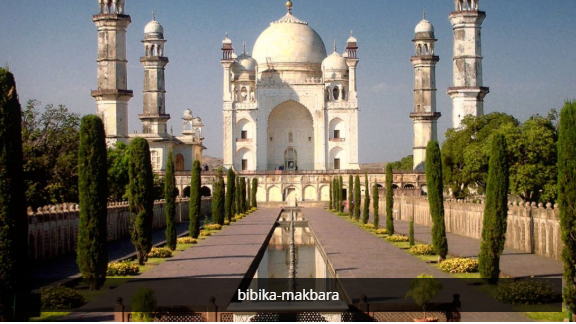
Bibi Ka Makbara ( Plan 4 Hours )
This is majestic place and if you are like the grand architecture and opulence this is the place for you to visit.
Situated about 3 km from the city is Bibi Ka Maqbara, the burial place of Aurangzeb’s wife, Rabia-ud-Durrani. It is an imitation of the Taj at Agra, and, due to its similar design, it is popularly known as the Mini Taj of the Deccan.
Best Places to Stay - Hotels in Aurangabad
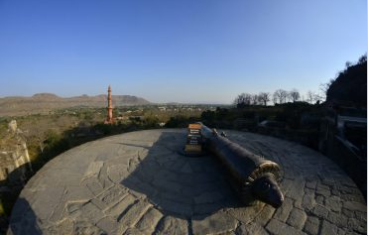
Daulatabad Fort, also known as Devagiri or Deogiri, is a historical fortified citadel located in Aurangabad, Maharashtra, India. It was the capital of the Yadava dynasty (9th century–14th century CE), for a brief time the capital of the Delhi Sultanate (1327–1334), and later a secondary capital of the Ahmednagar Sultanate (1499–1636).Around the sixth century CE, Devagiri emerged as an important uplands town near present-day Aurangabad, along caravan routes going towards western and southern India.
Best Places to Stay - Hotels in Aurangabad
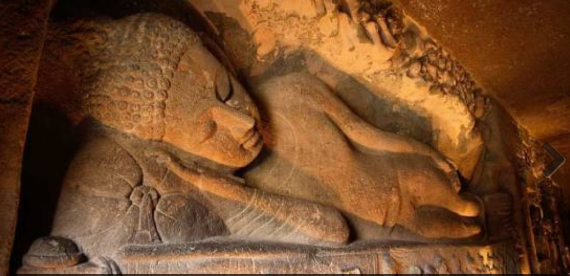
Padmapani Painting Ajanta Cave
The Ajanta Caves in Maharashtra, India are 31 rock-cut cave monuments which date from the 2nd century BC. The caves include paintings and sculptures considered to be masterpieces of both Buddhist religious art (which depict the Jataka tales) as well as frescos which are reminiscent of the Sigiriya paintings in Sri Lanka.
Best Places to Stay - Hotels in Aurangabad
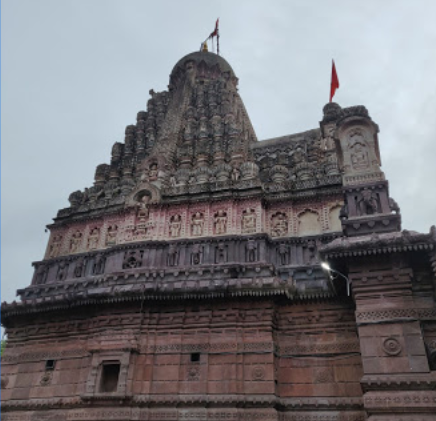
Ghrishneshwar Jyotirlinga Temple, Verul:
This is a 18th century temple of one of the five Jyothirlingas of Lord Shiva in Maharashtra and 12 of that in India.
The word Ghrneshwara means "lord of compassion".
The temple is an important pilgrimage site in the Shaiva tradition of Hinduism, which considers it as the last or twelfth Jyotirlinga (linga of light). This pilgrimage site is located in Ellora (also called Verul), less than a kilometer from Ellora Caves – a UNESCO World Heritage site. It is about 30 kilometers (19 miles) north-west of the city of Aurangabad, and about 300 kilometers (190 miles) east-northeast from Mumbai.
Best Places to Stay - Hotels in Aurangabad